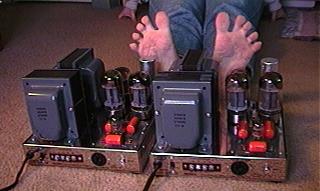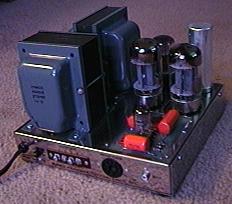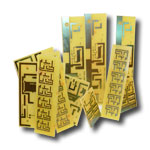Dyna Mark III Amp (And the SDS Labs quad cap board)

Wife Warming her toes on the MKIII's
The Dynaco Mark III is the highest power amplifier that was widely sold under the dyna name. There was a nigher power amp (the Mark VI), but it wasn't widely available. The Dyna MKIII has a basic design flaw that none of the other Dynaco products have. The capacitors in the power supply are not rated at a high enough voltage for the power transformer. This results in the quad cap being run over it's rated voltage every time the amp is turned on. The first section of the original quad cap is rated at 525 volts and the B+ goes as high as 585 volts during start up. This is due to the fact that the rectifier heats up and begins conducting before the power tubes heat up and start drawing power from the high voltage supply. The capacitor fatigue due to this over-voltage problem just get's worse with age, and to make matters worse, there isn't any 525 volt can caps available anymore. The amplifier doesn't have much room underneath to add a large capacitor bank either.
I have devised a printed circuit board that bolts directly under the output transformer without having to move any parts. It can be mounted in place using longer 8-32 bolts and a couple stand-offs or using the original transformer bolts and 8-32 threaded stand-offs. The circuit board uses 8 capacitors, with pairs in series to replace the quad cap. There are voltage equalizing resistors to keep the voltage across each cap equal. There is also provisions on the board for using silicon diodes instead of the 5AR4 rectifier (although I would recommend keeping the tube rectifier). There is also provisions on the board for film capacitor bypass for each of the 4 banks of capacitors. Without the film caps installed the capacitor board can handle B+ voltages up to 800 volts. With the film caps in place the board can handle voltages up to 630 volts. All of the parts for this board are available from Digi-Key, and the total cost is less than the replacement can cap for the ST-70.
Photos of the board installed in the MKIII can be seen in the Acrobat file below.

|
|

